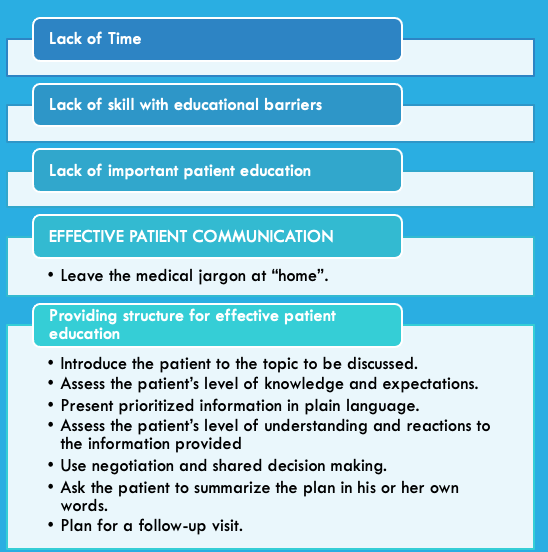Public Health and Interprofessional Collaboration
1/19
There's no tags or description
Looks like no tags are added yet.
Name | Mastery | Learn | Test | Matching | Spaced |
|---|
No study sessions yet.
20 Terms
What type of prevention is described
Preventing a disease before it develops
Brushing teeth prevents cavities
Adding Fluoride to water is a policy prevention change
Primary
What type of prevention is described
Identifying a disease early in its process to maximize the success of treatment and decrease the incidence of morbidity and mortality
Screening for diabetes, cancer, hypertension
Secondary
What type of prevention is described
Managing established disease in a patient/community and avoiding further complications
Care after an MI
Cardiac revascularization, rehab
Tertiary
What does this refer to
Alienating patients-evil of technology
Stop the cycle
Example of the error of way

What does this refer to
Distractions
What does this refer to
Control of and elimination of prevalent communicable diseases that cause illness, hospitalization, morbidity, and mortality across the lifespan
Vaccine-mimicking disease in a person without actually causing the disease in order to stimulate the immune system
Schedules are developed and posted by the Advisory Committee on Immunization Practices (ACIP)
Centers for Disease Control and prevention (CDC)
Immunizations
What does this refer to
Precontemplation
May or may not be informed appropriately, may have made unsuccessful attempts
Contemplation
Has made a decision to take action and make a change in the next 6 months and is open to communication about it
Preparation
Has made a decision and planning a change in the next 30 days
Action
Has made an overt behavior change in the last 6 months
Risky for relapse
Maintenance
Has maintained the behavior change for 6 months or greater
Transtheoretical model of change (Provider strategies)
What Transtheoretical model of change does this refer to
May or may not be informed appropriately, may have made unsuccessful attempts
Precontemplation
What Transtheoretical model of change does this refer to
Has made a decision to take action and make a change in the next 6 months and is open to communication about it
Contemplation
What does this refer to (patient characteristics and provider strategies)

Precontemplation
What does this refer to (patient characteristics and provider strategies)

Contemplation
What does this refer to (patient characteristics and provider strategies)

Preparation and determination
What does this refer to (patient characteristics and provider strategies)

Action
What does this refer to (patient characteristics and provider strategies)

Maintenance
What does this refer to
Identify those at risk
Screen appropriately
Prescribe guideline directed therapy
Be educated in order to appropriately counsel and educate on safety and efficacy
Be observant and a good listener to identify needs of patient (temptations, risks, etc…)
Be a good communicator with patients and professionals
Role as a PA
What does this refer to
H – Honor the “golden minute.” Make the start of the visit technology free and focus solely on the patient’s concerns.
U – Use the “triangle of trust.” Create a triangle configuration so that both you and the patient can see the screen.
M – Maximize patient interaction. Encourage the patient to interact with the graphs and trending tools for their own education.
A – Acquaint yourself with the chart. Review the chart before entering the patient’s room to allow for less chart review “screen time” when in the room with the patient.
N – Nix the screen. Disengage from the computer completely when discussing sensitive issues with the patient.
L – Let the patient look on. Allow the patient to see the screen and follow your actions.
E – Eye contact. Maintain eye contact with the patient as much as possible.
V – Value the computer. Use the EMR as a tool to engage patients and discuss its potential benefits.
E – Explain what you’re doing. Avoid long periods of silence by explaining what you’re doing as you’re doing it.
L – Log off. Log off at the end of the visit to ensure that medical information is secure.
Ways to enhance patient-centered EMR use
What does this refer to
Mandatory written reporting
Gonorrhea and salmonellosis
Mandatory by telephone
Rubeola and pertussis
Number of cases
Chicken pox and influenza
Cancer to cancer registries
What does this refer to
Volunteer panel of national experts in prevention and EBM
Goal is to improve the health of all Americans by making EBM recommendation about clinical preventive services.
They do not do trials but research populations and outcomes and develop recommendations and give these recommendations a letter grade based upon supportive data.
United States Preventive services task force
What does this refer to

Provider barriers
What does this refer to
_________ includes 358 core — or measurable — objectives. This is a change from Healthy People 2020, which had more than 1,000 measurable objectives. With fewer objectives, the workgroups were able to avoid overlap and prioritize the most pressing public health issues.
Emphasizes nutrition, exercise, environmental factors, and occupational safety in advancing health
39 targets with 600 measurable outcomes
Reduction of the number of new cases of Diabetes
Increasing the number of HgA1c measurements
Program established in 1979
Healthy People 2030